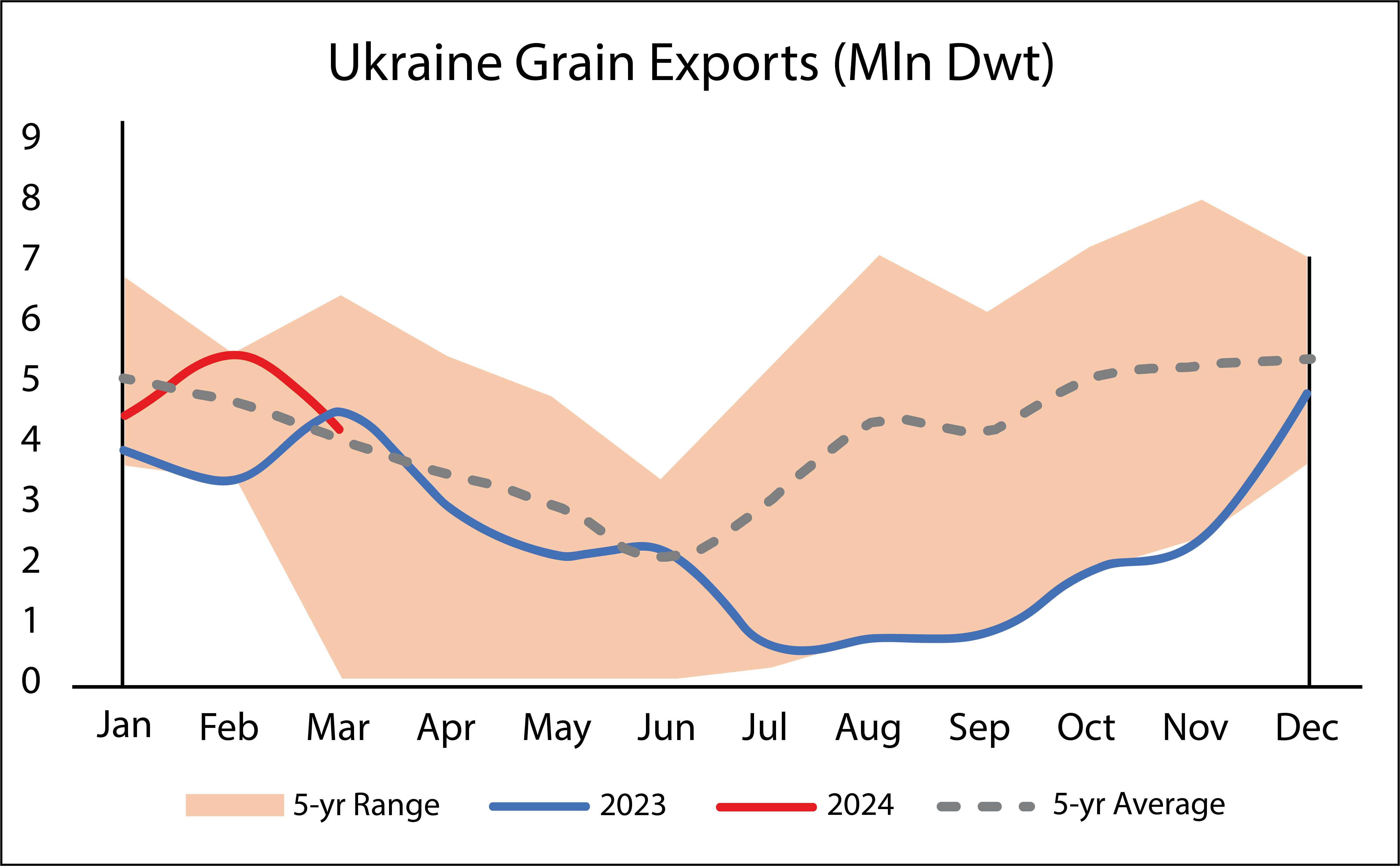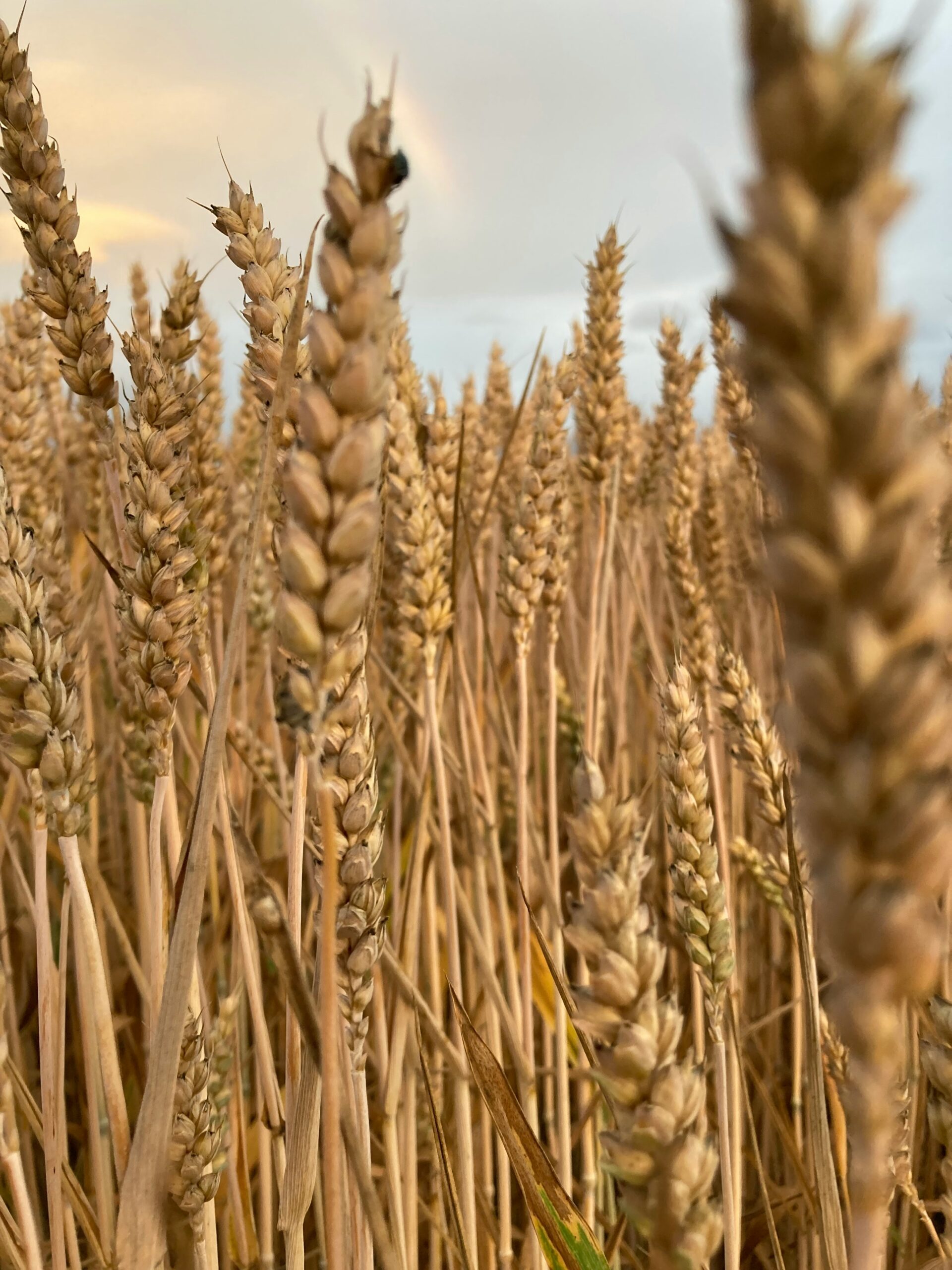Ukraine has seen some success in exporting grains via its alternative Black Sea corridor, which was launched in August 2023, after Russia suspended the Black Sea Grain Initiative. Ships are now travelling on the western coast of the Black Sea through Romanian and Bulgarian territorial waters. Grain exports since December 2023 are now around the 5-year average levels.
Ukraine may be forced to increase seaborne grain exports via the Black Sea, due to increased hurdles exporting via land-based routes through EU solidarity lanes. To help ease the flow of goods to and from Ukraine, the European Commission launched the Solidarity Lanes action plan in May 2022, which provides logistical alternatives to Ukraine’s seaports, including rail, road, and inland waterways. In response to Russia’s invasion, the EU also allowed tariff-free food imports from Ukraine. However, farmers and truckers in neighbouring countries have been resisting as they fear losing out on their competitiveness. The continued strength of Ukraine’s seaborne grain exports will also depend on how the military threat from Russia develops.


